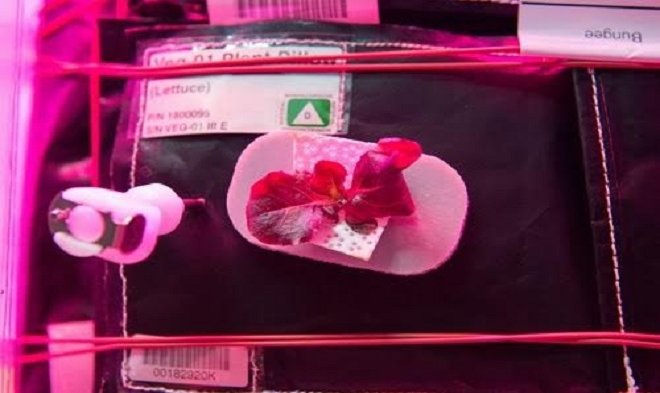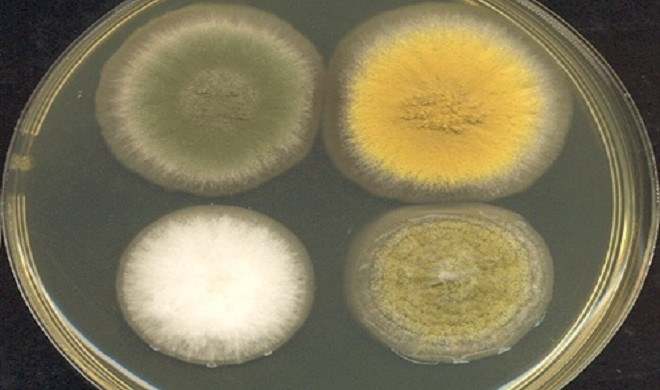Experiments can bring people to Mars
Growing cabbage in the universe, growing mushrooms to make medicines, testing inflated housing are experiments that can help bring people to Mars by the US Aerospace Agency (NASA).

According to Business Insider, astronauts successfully planted lettuce on the International Space Station (ISS) since May 2014.NASA is working on the Veggie program to grow more cabbage in space.

Scientists hope that Toyko Bekana cabbage will grow at zero gravity environment on ISS.Astronauts will eat a portion of this space cabbage, while the rest is cooled, sent to Earth for further analysis.Planting trees in the food space plays a very important role, helping to provide nutrients and maintaining health for astronauts on the way to Mars.(Photo: NASA).

Mushrooms are natural ingredients used to make drugs, such as penicillin. Aspergillus nidulans will be the first fungus to be brought to the space station, with the aim of developing a new drug used both in space and on Earth.The team is led by Clay Wang, a pharmacist at the University of South California, USA, who is planning to grow fungi on space and ground, then compare two groups of genes, proteins, and metabolites. .The group hopes that the space environment causes fungi to create new compounds, or accelerate the production of medicines.(Photo: Adrian J. Hunter).

Although only about 3 to 6 astronauts live on space stations, each contains millions, or billions of bacteria. Kasthuri Venkateswaran, an expert working at NASA's Jet Propulsion Laboratory (JPL), is taking samples to test bacterial evolution over time.The experimental method is to use DNA analysis to understand the effects of zero gravity, radiation, human presence on bacterial populations.The research helps limit harmful bacteria that arise during long-term human flight in space.The beneficial bacteria in space other than on Earth will be exploited to serve human interests, Venkateswaran said.(Photo: NASA).

Due to the gravitational pull on the International Space Station weaker than Earth, astronauts lose a lot of muscle mass in a long-term space flight. Drug development company Eli Lilly will test a new antibody, which helps prevent muscle decline in 20 mice.If tested successfully, it will not only help astronauts but also many people on Earth who suffer from muscular atrophy (ALS), age-related muscular atrophy.(Photo: NASA).

Polymerase chain reaction (PCR) is a common technique in the field of molecular biology , to produce multiple copies of a piece of DNA without using living organisms such as E.coli or yeast. Scientists plan to conduct experiments to see if PCR works in space , thereby finding a way to detect genetic changes that astronauts encounter when performing long-term space flight. .(Photo: NASA).

NASA expects an inflatable housing test , or Bigelow Extension Activity Module (BEAM), connecting to ISS in late May or early June. Although the BEAM module is only about the size of a small bedroom, it is This technology greatly affects the future of human space exploration.The sensors will assess the impact of debris, as well as the level of radiation and temperature inside the BEAM module.Astronauts enter and leave the module about 4-6 times per year, with a time of 3 hours each time.On the first visit, astronauts can walk in the module without an astronaut or other life support device.The BEAM module will pave the way for private space stations on Earth orbit, as well as compact inflatable housing sent to the Moon or Mars.(Photo: Bigelow Aerospace).
- NASA plans to bring settlers on Mars
- Why did the project bring people 'one go back' to Mars bankrupt but no one regrets?
- 5 videos tell you Elon Musk's detailed plan to bring people to Mars
- Details of NASA's 5-stage plan to bring people to Mars
- Humans can only survive 68 days on Mars
- How crazy is Elon Musk's mission to bring people to Mars?
- 100,000 people registered on Mars
- People who survive on Mars can evolve into new species
- NASA and SpaceX: Who will complete the mission to bring people to Mars first?
- If you don't bring people to Mars, humans will soon become extinct
- Should women be put on Mars first?
- How to bring Martian stones to Earth?
 Van Allen's belt and evidence that the Apollo 11 mission to the Moon was myth
Van Allen's belt and evidence that the Apollo 11 mission to the Moon was myth The levels of civilization in the universe (Kardashev scale)
The levels of civilization in the universe (Kardashev scale) Today Mars, the sun and the Earth are aligned
Today Mars, the sun and the Earth are aligned The Amazon owner announced a secret plan to build a space base for thousands of people
The Amazon owner announced a secret plan to build a space base for thousands of people